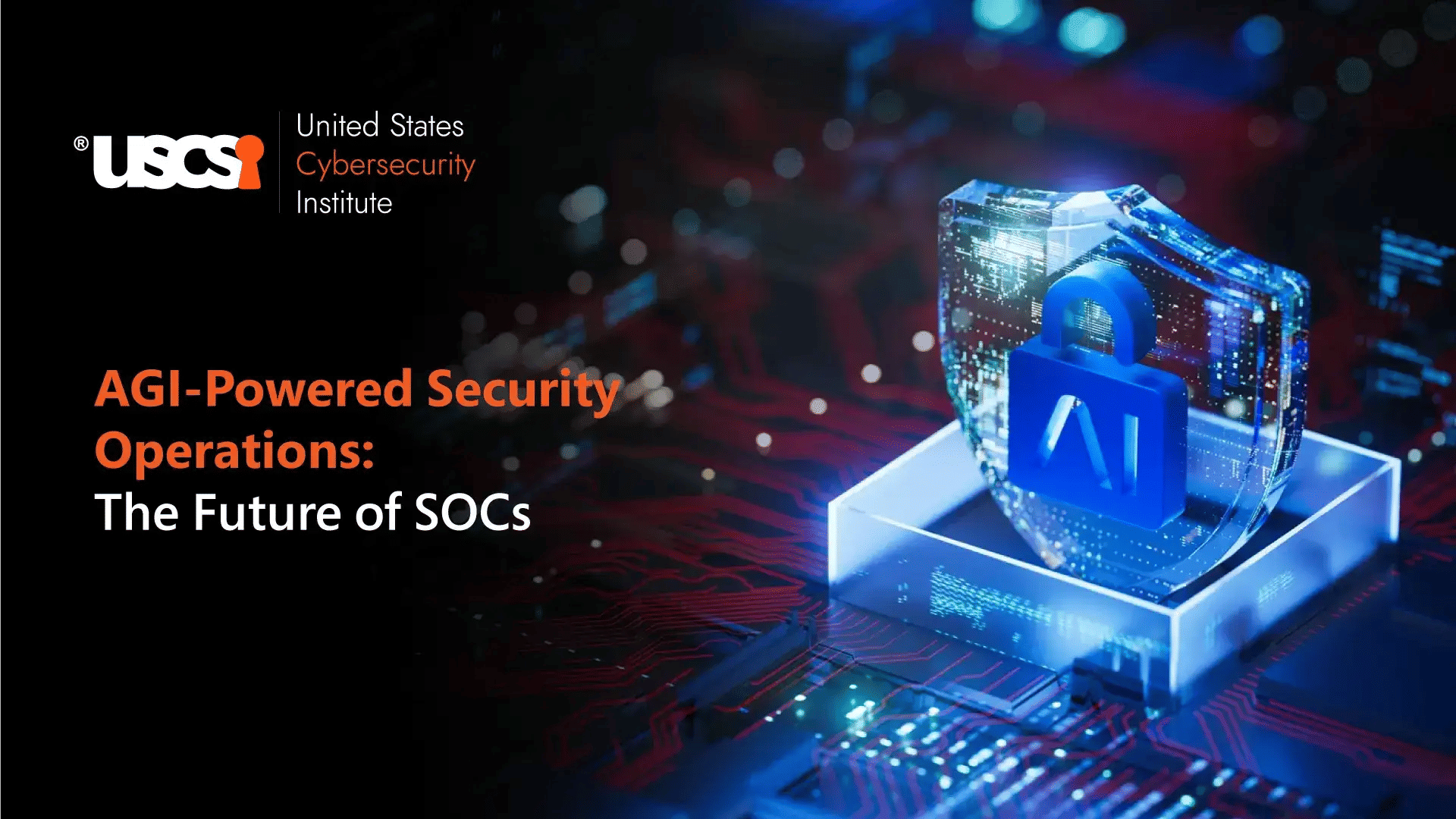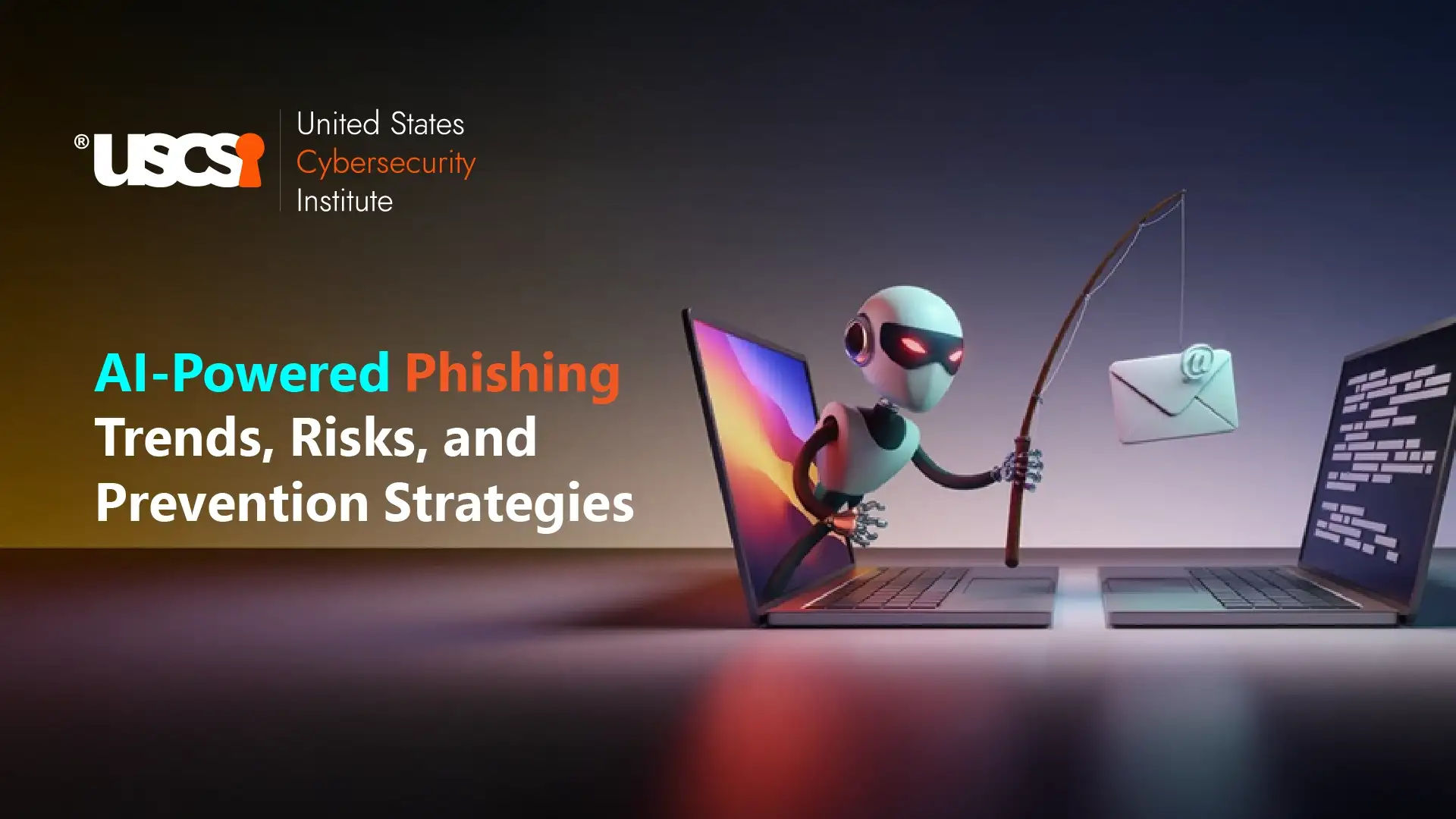

EDR vs XDR vs MDR - Powering Modern Cybersecurity
Security operations are entering a new era, an era where the emphasis on tools will evolve into the notion of one holistic security solution that incorporates automation, analytics, and human oversight.
This market transition is reflected in where we see current movement: EDR sales are projected to be $5.1 billion ($16 billion when combined with endpoint security) by 2025 (Mordor Intelligence), and by 2025, Gartner expects 50% of organizations to be using managed detection response (MDR) services for 24/7 security coverage.
Of course these aren't just numbers—the growing use of EDR/XDR, and the global trend toward MDR, there has been a growing acknowledgment that simply detecting is not enough. Organizations now need to understand how EDR, XDR, and MDR all play a role in an organization's security architecture—and more importantly, the difference between when they matter and why.
Understanding Endpoint Detection and Response (EDR)
EDR is a targeted monitoring, detection, investigation, and response system that aims to provide protection specific to endpoints such as desktops, servers, or mobile devices. This protection is done primarily by detection of behavioral anomalies and investigative response to the endpoint security and provides visibility in order to assist incident response.

Benefits of EDR:
- At the device level, detects threats is very accurate
- Provides historical evidence of devious activity for incident investigation
- Facilitates speedy containment and remediation of endpoint threats
Understanding Extended Detection and Response (XDR)
XDR is a step forward from EDR, incorporating additional security layers, including endpoint, network, email, cloud, and more, into a single detection and response solution. This enables cross-layer threat analysis and correlation, which is essential for discovering advanced, multi-vector attacks.
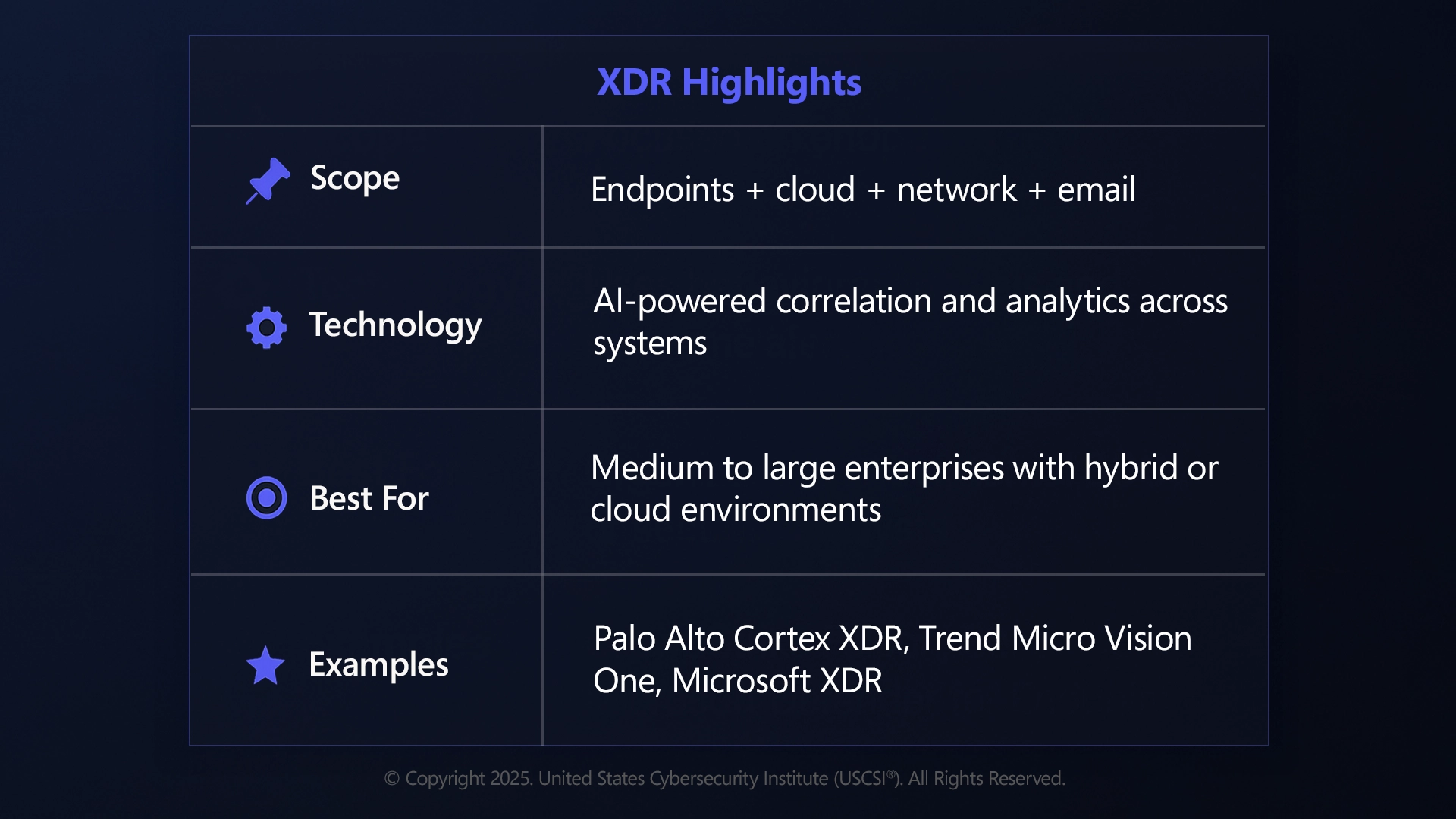
Benefits of XDR:
- Decreases issues of alert fatigue by gathering information sources in one place
- Enhances the sensitive attack surface detection
- Speedy reaction to threats and less manual triage
Understanding MDR (Managed Detection and Response)
MDR is a human-augmented security service and integrates threat monitoring and detection, analysis, and response. It is constructed on EDR/XDR technologies, but it also incorporates 24/7 professional-based threat hunting, so it is an appropriate choice to use it in organizations that do not have internal cybersecurity teams.
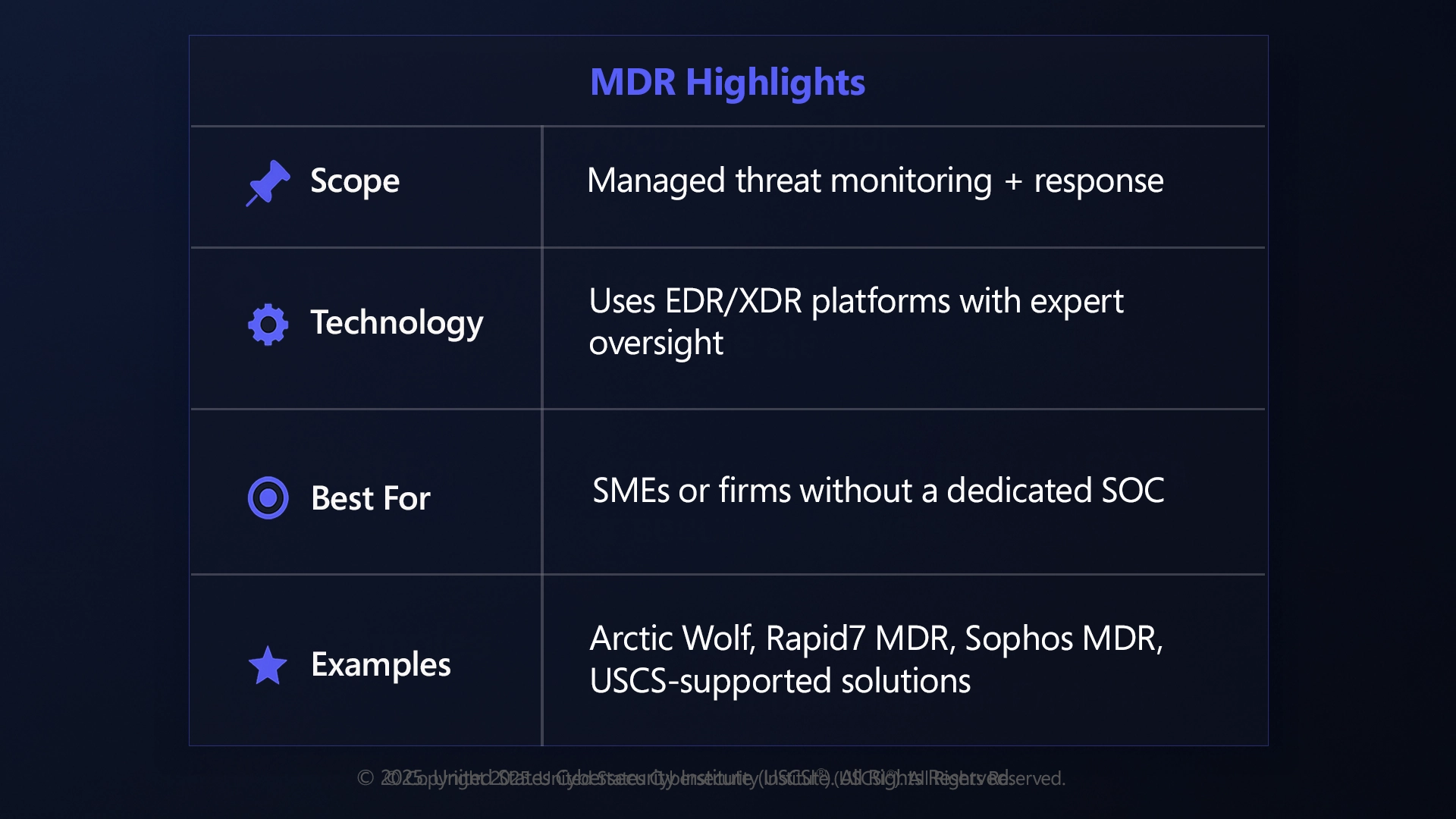
Benefits of MDR:
- Constant monitoring of threats by specialist analysts
- Shortens the response time and alert fatigue
- It is scalable to accommodate the bigger organization without the increase of headcount.
The Comparison: EDR vs. XDR vs. MDR
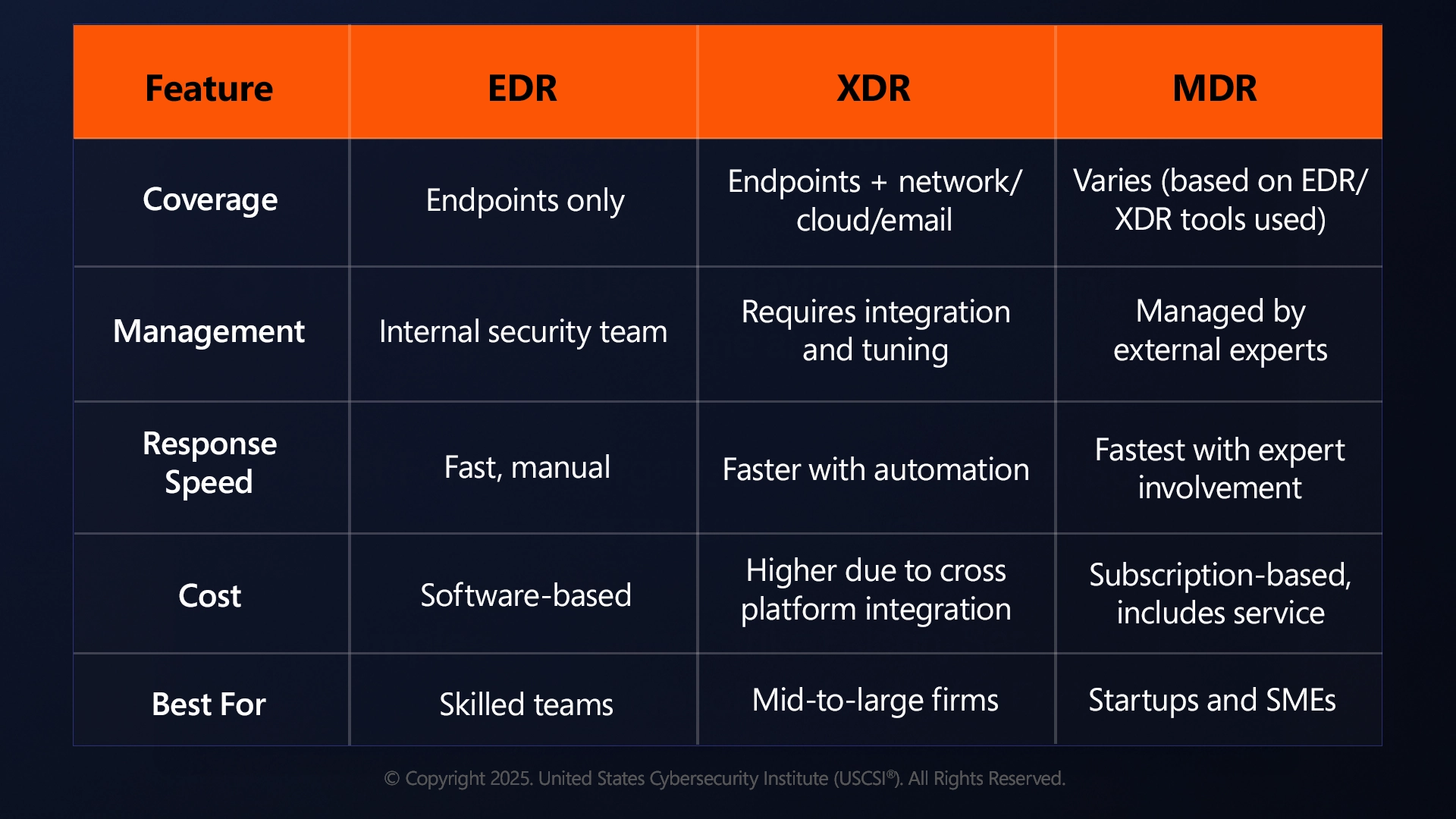
Choosing the Right Approach: Be Business Wise
Your choice should be based on the size, IT maturity, risk exposure, and talent pool of your company. This is a brief guide:
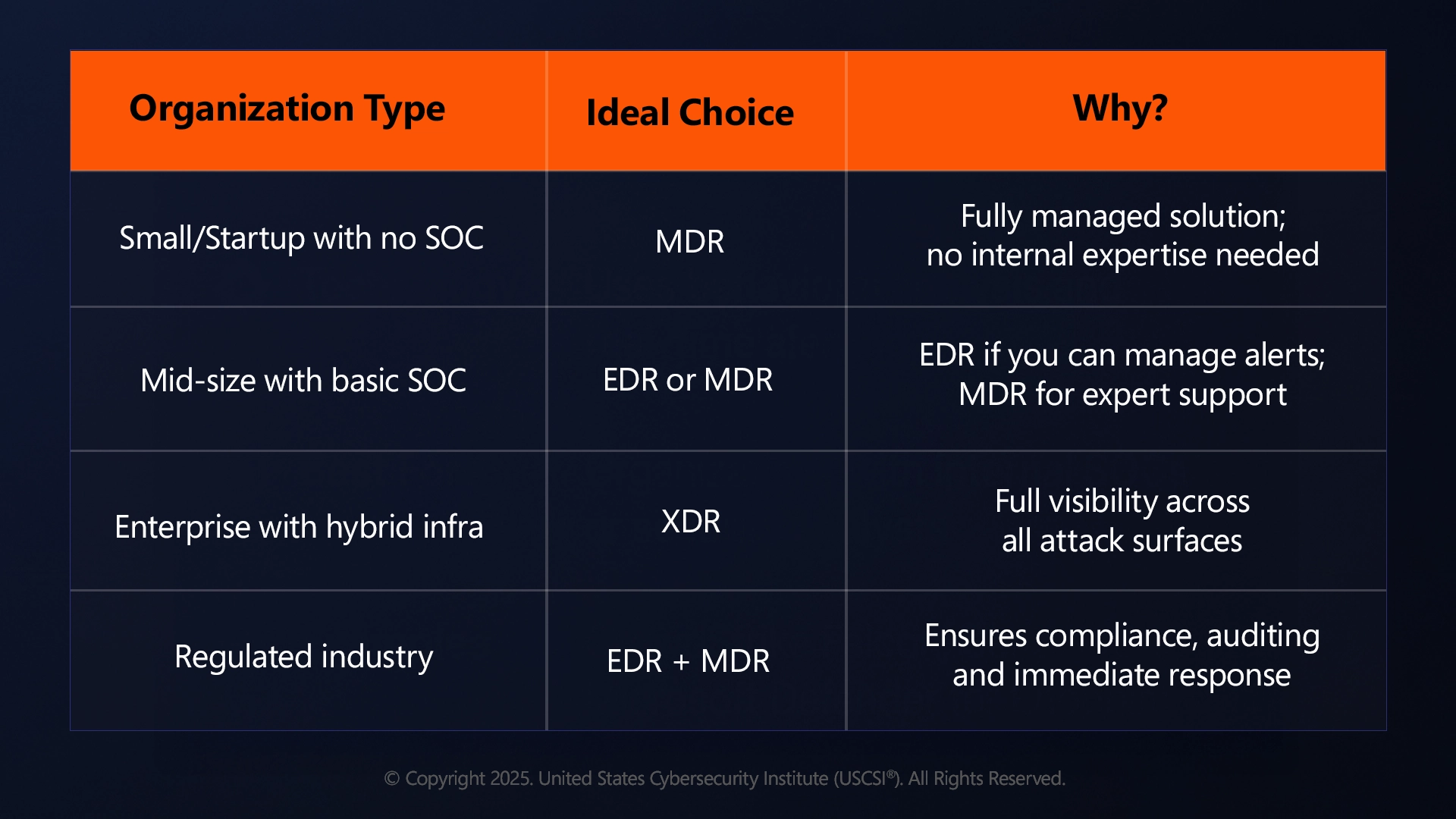
Career Impact: Why Cybersecurity Experts Should Master These Tools
It is now essential for cybersecurity experts to comprehend EDR, XDR, and MDR. Gaining proficiency with these tools advances your cybersecurity career in:
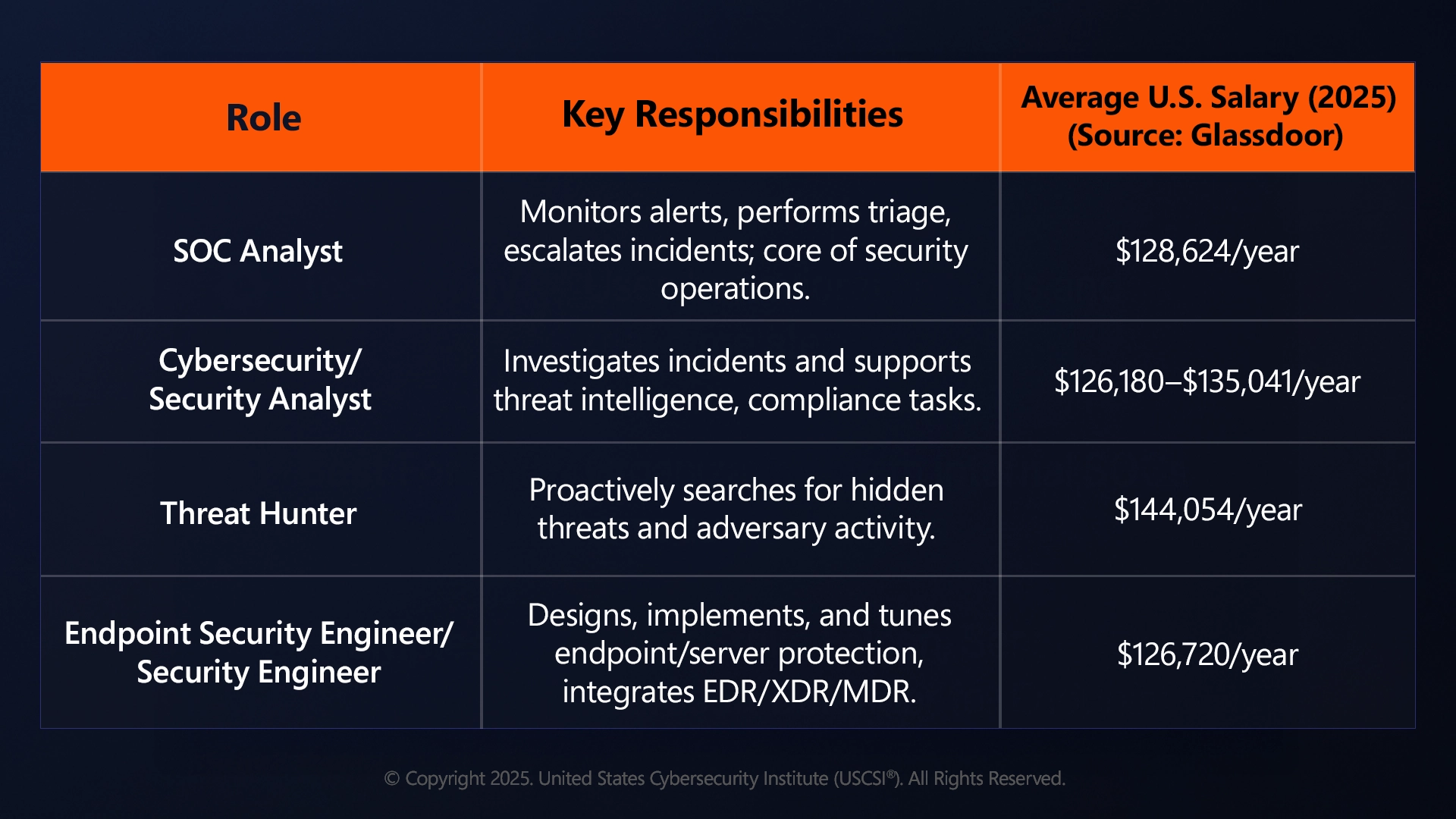
Is Unified Security the Future?
Indeed, an astounding yes! The decision between EDR, XDR, and MDR is more than a decision focused on tools; it is a determination of a security posture, access to available expertise, and the tolerance of risks.
- Choose EDR in case you have an on-site team capable of handling reactions and alerts.
- Adopt XDR when your infrastructure is very complicated and has a series of environments.
- Choose MDR when you have a requirement to cover all the threats 24*7 without the need to employ a team.
The cybersecurity landscape is increasingly heading toward hybrid models—using XDR for deeper visibility on multiple types of platforms and MDR for the managed hour by available subject matter experts that can respond in real time—backed by knowledgeable professionals educated in top cybersecurity certifications such as those offered by the USCSIr among many others.

